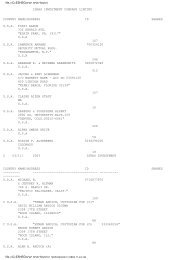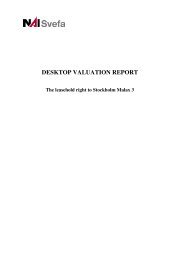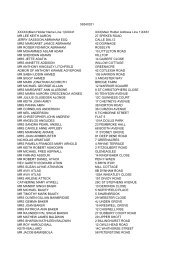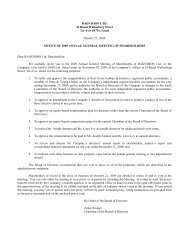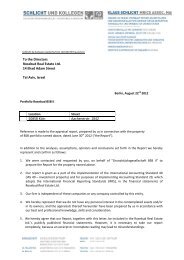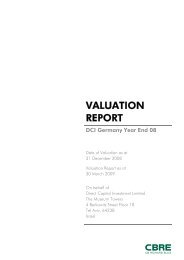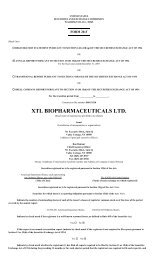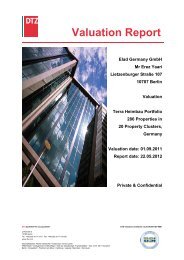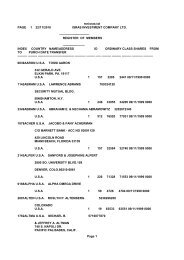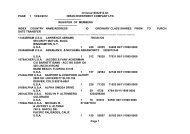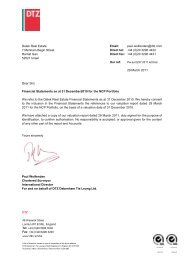RETALIX LTD.
RETALIX LTD.
RETALIX LTD.
Create successful ePaper yourself
Turn your PDF publications into a flip-book with our unique Google optimized e-Paper software.
NOTE 1 – SIGNIFICANT ACCOUNTING POLICIES:<br />
a. General:<br />
1) Nature of operations:<br />
<strong>RETALIX</strong> <strong>LTD</strong>.<br />
NOTES TO CONSOLIDATED FINANCIAL STATEMENTS<br />
a) Retalix Ltd. (“the Company”), an Israeli corporation whose shares are listed on the Nasdaq Global Select Market<br />
(under the symbol “RTLX”) and on the Tel-Aviv Stock Exchange (“TASE”), separately and together with its<br />
subsidiaries and an associated company (“the Group”), develops, manufactures and markets integrated<br />
enterprise-wide, open software solutions for the sales operations and supply chain management operations of<br />
food and fuel retailers, including supermarkets, convenience stores and fuel stations as well as suppliers and<br />
manufacturers in the food industry.<br />
b) As to the Group’s geographical segments and principal customers, see note 14.<br />
c) Subsidiary - over which the Company has control and over 50% of the ownership<br />
d) Associated company - an investee company (which is not a subsidiary), over which financial and operational<br />
policy the Company exerts material influence.<br />
2) Accounting principles and use of estimates in the preparation of financial statements:<br />
The financial statements have been prepared in accordance with accounting principles generally accepted (“GAAP”) in<br />
the United States of America (“U.S. GAAP”).<br />
The preparation of financial statements in conformity with GAAP requires management to make estimates and<br />
assumptions that affect the reported amounts of assets and liabilities, and the disclosure of contingent assets and<br />
liabilities at the dates of the financial statements as well as the reported amounts of revenues and expenses during the<br />
reporting years. Actual results could differ from those estimates.<br />
3) Functional currency:<br />
The currency of the primary economic environment in which the operations of the Group and almost each member of the<br />
Group (except for one subsidiary and the associated company) are conducted is the U.S. dollar (“dollar”; “$”). Most of<br />
the Group’s revenues are in dollars or in Israeli currency linked to the dollar (see note 14a). The Group’s financing is<br />
mostly in dollars. Thus, the functional currency of the Group is the dollar.<br />
Transactions and balances originally denominated in dollars are presented at their original amounts. Balances in nondollar<br />
currencies are translated into dollars using historical and current exchange rates for non-monetary and monetary<br />
balances, respectively. For non-dollar transactions and other items (stated below) reflected in the statements of income,<br />
the following exchange rates are used: (i) for transactions - exchange rates at transaction dates or average rates; and (ii)<br />
for other items (derived from non-monetary balance sheet items such as depreciation and amortization, changes in<br />
inventories, etc.) - historical exchange rates. Currency transaction gains or losses are carried to financial income or<br />
expenses, as appropriate. The functional currency of one subsidiary and of the associated company is their local currency<br />
(Euro and “New Israeli Shekel”) (“NIS”). The financial statements of the said subsidiary are included in the<br />
consolidation based on translation into dollars in accordance with Financial Accounting Standards Board (FASB)<br />
Statement No. 52 “Foreign Currency Translation” (FAS 52):<br />
F-11



